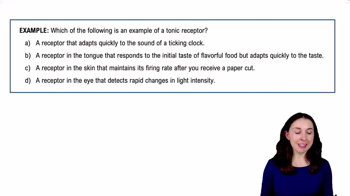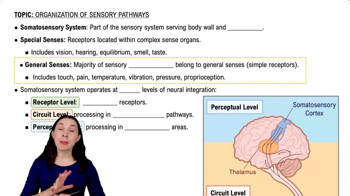Stimuli from the inner ear regarding head movement and position are sent to all of the following except the:
a. Vestibular nuclei
b. Oculomotor nucleus
c. Parietal lobe
d. Cerebellum.
e. Trigeminal nucleus
 Verified step by step guidance
Verified step by step guidance Verified video answer for a similar problem:
Verified video answer for a similar problem:

